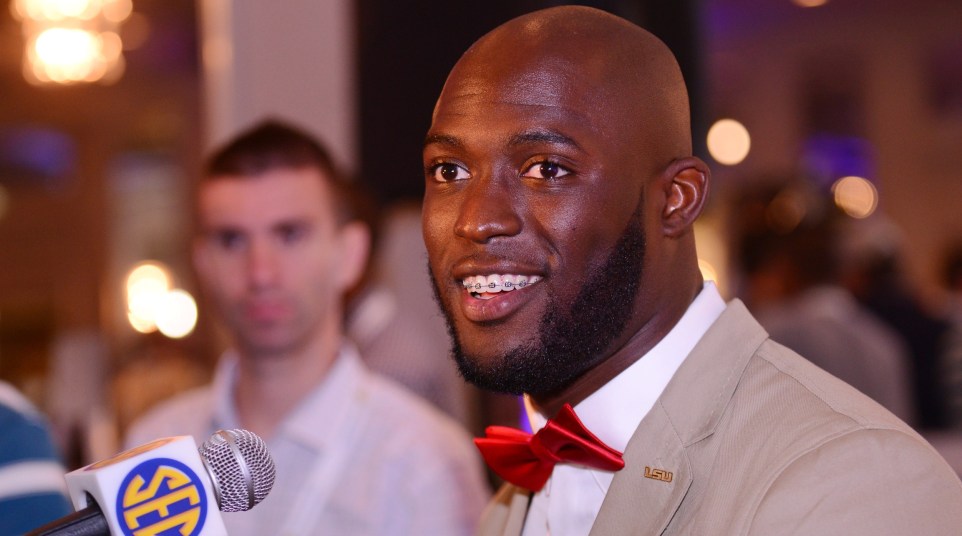Predicting the SEC's 1,000-yard rushers
We ranked the SEC’s best running backs in 2015 after spring practice ended.
With the possible exception for Arkansas’ productive duo, the 2015 SEC running backs are a collection of respectable players that aren’t going to make national names for themselves, and then three terrific superstars.
If Leonard Fournette, Nick Chubb and Derrick Henry stay healthy, those three are all but guaranteed to reach 1,000 rushing yards.
RELATED: Predicting the SEC’s 3,000-yard passers
I also anticipate that Auburn, the SEC’s best running team since Gus Malzahn became head coach, will produce a 1,000-yard rusher. Roc Thomas arguably had a more exciting spring, but JUCO transfer Jovon Robinson is better suited as an every-down, between-the-tackles player. I suspect he’s most likely to benefit from the effective Tigers offense this fall.
Russell Hansbrough and Ralph Webb straddled either side of 1,000 rushing yards last season, and I expect both players to hover near that number in 2015. Their respective offenses will rely on them, likely as the No. 1 option, but passing games at Missouri and Vanderbilt must prove capable of keeping defenses honest.
PROJECTING 1,000-YARD RUSHERS IN THE SEC
- Leonard Fournette, LSU
- Nick Chubb, Georgia
- Derrick Henry, Alabama
- Jonathan Williams, Arkansas
- Jovon Robinson, Auburn
- Ralph Webb, Vanderbilt
- Russell Hansbrough, Missouri
Just missed: Alex Collins, Arkansas; Dak Prescott, Mississippi State; Jalen Hurd, Tennessee.
Let me pre-empt the outcry sure to come regarding the exclusion of Collins on this list.
Yes, Collins rushed for more than 1,000 yards in each of his two college seasons. Arkansas’ offensive line could be better at run-blocking than every SEC team outside of Georgia. Coach Bret Bielema won’t stop running the ball any time soon.
But new Razorbacks coordinator Dan Enos seems intent on dumping the ball to Williams and Collins more in the passing game, which could shift some of their production from rushing yards to receiving yards. And Collins’ production has waned during the second half of the season, so it’s possible the team will attempt to keep him fresher with the equivalent of a pitch count early in the year.
Prescott came within 14 yards of this mark last year. But much like former Texas A&M quarterback Johnny Manziel and former Auburn quarterback Nick Marshall, I anticipate Prescott will run less and throw more as he attempts to improve his standing in the minds of NFL personnel staff.
Although 1,000 rushing yards is a significant benchmark, it’s not the only way to measure a player’s ability.
For example, Alabama’s Kenyan Drake is a legitimate threat to challenge for the team lead in receptions, but won’t approach 1,000 rushing yards unless something goes very wrong with Henry. Kentucky’s Boom Williams, also very good, may not get enough carries within the Air Raid offense, which should distribute the ball to a number of young Wildcats skill players. Ditto Tennessee’s Hurd with Alvin Kamara sharing the backfield.
Another factor to watch is all the quarterback uncertainties in the SEC this year. If teams don’t trust the point person in the passing game, might the conference play-callers rely more on backfields to carry the ball, and the offense?
Last season, seven SEC players topped 1,000 rushing yards. We’ve predicted the same number his year, but that sort of paradigm shift could push the total higher.

